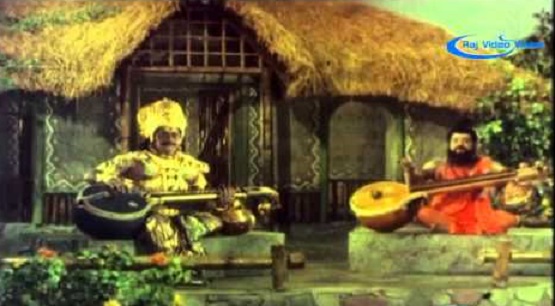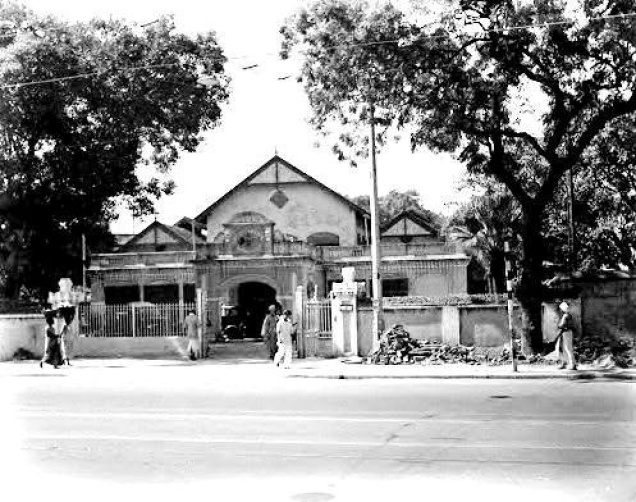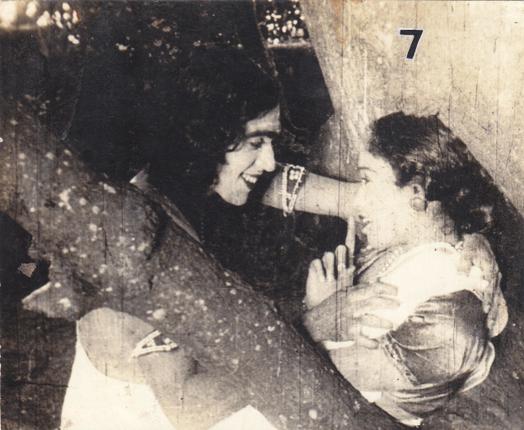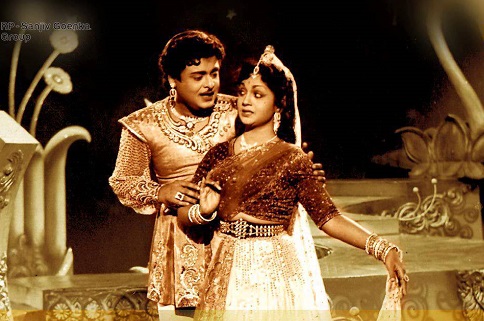Tamil cinema: history
Indpaedia has several pages on Tamil cinema. This page invites history, photographs, trivia and anecdotes from the beginning to 2009. Please send details after 2010 to Tamil cinema: 2010 onwards
Readers can send additional information, corrections, photographs and even
complete articles on new subjects to our Facebook page Indpaedia.com. If found suitable, this additional information will be incorporated into the Indpaedia article (with an acknowledgement) and new entries will be created (also with due acknowledgement). Readers will be able to edit existing articles and post new articles directly on Indpaedia.com only after its formal launch. |

Contents |
Silent movies in the South Indian cinema
The Hindu, January 30, 2016


From the shadows into the limelight
The silent era of south Indian cinema is a precious artistic heritage that needs to be preserved
A hundred years ago, Nataraja Mudaliar, an automobile spare parts dealer in Madras (now Chennai), made Keechakavatham (annihilation of Keechakan), the first feature film of south India. This 6,000-feet movie marked the birth of a cultural colossus — Tamil cinema. The characters spoke Tamil, but as there was no soundtrack, the spoken words were flashed on screen in title cards. Often, a man known as the ‘explainer’ stood near the screen and read the cards aloud. Mudaliar, the solitary pioneer, went on to make six more films from his studio in Kilpauk and later in Vellore and made a political point by naming his studio India Film Company.
The silent era in south India lasted till 1934. A total of 124 feature films were made by different filmmakers, in addition to some shorts. However, only one film from that period, Marthandavarman (with Malayalam title cards), has survived. The films were sold off as junk to dealers who extracted a little bit of silver out of the nitrate stock. Even photographs or printed matter from this period are rare. In the 1970s, I could meet some filmmakers and actors from that age who were still alive, but our major source of information for the silent era remains the report of the Indian Cinematograph Committee of 1927 headed by T. Rangachari.
A newfangled medium
Mudaliar may have made his debut in 1916, but moving picture had arrived in Madras from abroad long before. In 1897, the first screening of short films was held in the Victoria Public Hall, just two years after the Lumiere brothers stunned the Paris audience with their invention. Soon, regular ticketed screenings in tents and later in hired halls began being held. People went to these shows more out of curiosity, to see the spectacle of pictures that could move. There was no suggestion, however, that these moving pictures would transform themselves into an all-pervading entertainment medium in the decades to come.
In 1905, Swamikannu Vincent set up a tent in Tiruchi and screened short films such as Life of Jesus Christ. With a projector and a few short films, he travelled to Peshawar in the north and Rangoon in the east and came back to Coimbatore, his home town, to build a cinema house, the historic Variety Hall, and later produced a few talkies. Recently, a documentary on Vincent’s life, Pezhamozi (silent language), has been made by Senthamizhan, a promising filmmaker.
The first cinema house, The Electric Theatre, built by Warwick Major still stands in the Anna Salai post office compound in Chennai. In an inegalitarian society, the cinema house emerged as a great leveller, one of the earliest public spaces. People from all walks of life, irrespective of caste, class and creed, could gather under one democratic roof and be under the spell of this newfangled medium.
During the screening, there were frequent breaks as the projector would get hot. The films were often of poor quality, full of scratches and cuts. To compensate, exhibitors introduced extraneous entertainment like dances, magic shows and even boxing bouts on the stage. Popular pugilist Gunboat Jack is known to have done the rounds in cinema houses in Madras. This practice laid the foundation for unconnected entertainment elements such as comedy tracks or songs or dances being shoved into films in later years.
Before Mudaliar made Keechavatham, some self-taught cinematographers had been dabbling in short films. Marudamuthu Moopanar of Thanjavur filmed the landing of the first aircraft on Island Grounds of Madras. It was from him that Mudaliar bought a Williamson camera and projector. Joseph David of Kilpauk filmed the sculptures of Mamallapuram. After the German destroyer Emden shelled Madras in 1914, the burning of Burma Shell petrol tanks was filmed. In 1922, two British Army officers made a two-reel short film of the Moplah Rebellion. But none of these films are extant.
A. Narayanan: A graduate of the Presidency College, he travelled to Hollywood and met movie moguls like Carl Laemmle, founder of one of the major movie studios, Universal. The studio Narayanan founded, in Madras in 1929, General Pictures Corporation, proved to be the school for many filmmakers of the talkie era. Narayanan made a number of feature films including Dharmapathini and Kovalan, both in 1929. He went on to set up the first sound studio in the south, Srinivasa Cinetone, in 1934 in which his wife Meenakshi was the sound recordist. He laid the foundation for the film industry in the south. There were other filmmakers such as R. Prakash and Raja Sandow who made significant contributions by making films in Madras. Most of the films were either mythologicals or folklore, like Nallathangal. These were stories already well known to the viewers.
In addition to Narayanan’s General Pictures Corporation, there were other studios in Madras like the Star of the East, but most of them were primitive structures, open-roofed sheds covered with canvas sheets which could be manipulated to let in the sunlight. The camera was hand-cranked at 16 frames a second. Each studio had a lab in which films were developed by the hand-washing method.
Sway of foreign films
Making films was far from easy back then; filmmakers like Narayanan had to fight against many odds. The British government, keen on promoting films from the U.K., was not helpful to Indian filmmakers. The sway of foreign films had a crippling effect on the fledgling industry. The censorship machinery, functioning under the police, did not allow for any nationalist or political issues in the films. What’s more, the educated elite despised cinema, looked down upon it as plebeian entertainment and did not engage with it. No wonder you rarely see any reference to films in the publications of the time. Writers like Subrahmanya Bharathi and Madhaviah, active during this period, ignored the new art form.
Most of the pioneers of the silent era remain forgotten, in the shadows than in the limelight. However, in 1970, in a rare gesture, the Cine Technicians Association of South India honoured Nataraja Mudaliar at a function in Madras in which the then Union Minister Y.B. Chavan and the then Chief Minister M. Karunanidhi also participated. No cinema in the world can disown its silent past. The silent era of cinema is what childhood is to a human being; it is where the roots lie. It is a precious artistic heritage that needs to be preserved and archived.
See also
Indpaedia has several articles about Tamil cinema. Some of the more popular ones are
Colour films in Tamil (history)
The private lives of Tamil filmstars
